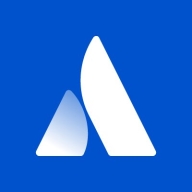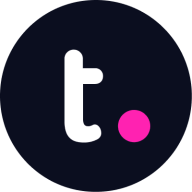

Find out in this report how the two Project Management Software solutions compare in terms of features, pricing, service and support, easy of deployment, and ROI.


Jira Portfolio is an agile roadmapping tool designed to help teams build plans, envision the big picture, track progress, and share the process with stakeholders.
Jira Portfolio is planned based. A plan in Portfolio is a complete view of the tasks, teams, and release dates for your Jira projects.
Once you start to create a plan, there are three main factors you need to define:
With Jira Portfolio, you can create a visual timeline to gain visibility across each of your teams and projects in a single place from a granular level and review cross-team and cross-project dependencies to prevent bottlenecks. This visibility can help you plan realistic release dates and manage your team’s capacity. The solution allows you to try out different scenarios with your roadmap and resources to help guide your decision making. Once you have a solid plan, you can easily integrate with Jira Software and commit your changes.
Jira Portfolio allows managers to easily add team members. The tool’s powerful scheduling algorithm assigns tasks to teams while taking priorities and dependencies into account so it can create a realistic forecast for project completion.
Jira Portfolio Benefits
Some of the top benefits of using Jira Portfolio include:
Reviews from Real Users
Jira Portfolio stands out among its competitors for a number of reasons. Two major ones are its roadmap creation tools and its flexibility.
Meeta L., a lead product manager at a tech vendor, says, “The valuable features of the JIRA Portfolio are the customization it provides which is very useful and the Agile project management capability.”
Juan P., a senior IT project manager at Avantica, writes, “Portfolio helps us increase the visibility of projects' status and management with remote workers who make up most of the company.”
Teamwork is a comprehensive project management and collaboration software that enables teams to work together efficiently and effectively. With its wide range of features and intuitive interface, Teamwork helps streamline workflows, improve communication, and increase productivity.
One of the key features of Teamwork is its task management capabilities. Users can create tasks, assign them to team members, set due dates, and track progress. This ensures that everyone is on the same page and deadlines are met. Additionally, users can create task dependencies, allowing for better coordination and sequencing of work.
Teamwork also offers powerful collaboration tools. Users can create and share documents, files, and notes, making it easy for team members to access and collaborate on important information. The software also includes a messaging feature, enabling real-time communication and reducing the need for lengthy email threads.
Another notable feature of Teamwork is its time-tracking functionality. Users can log their time spent on tasks, providing valuable insights into project progress and resource allocation. This feature is particularly useful for tracking billable hours and ensuring accurate invoicing.
Teamwork also offers robust project planning and scheduling capabilities. Users can create project timelines, set milestones, and allocate resources. The software provides a visual representation of project progress, allowing teams to easily identify bottlenecks and adjust timelines accordingly.
Furthermore, Teamwork integrates with a wide range of third-party applications, such as Google Drive, Dropbox, and Slack, enhancing collaboration and streamlining workflows. The software also offers mobile apps, enabling users to stay connected and productive on the go.
We monitor all Project Management Software reviews to prevent fraudulent reviews and keep review quality high. We do not post reviews by company employees or direct competitors. We validate each review for authenticity via cross-reference with LinkedIn, and personal follow-up with the reviewer when necessary.